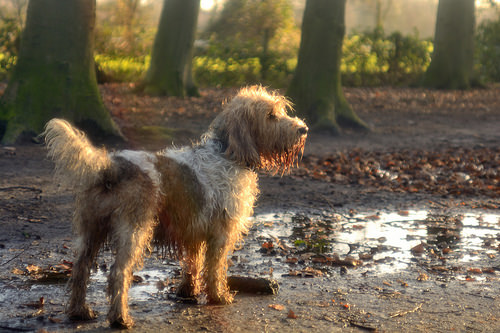
Grand Basset Griffon Vendéens were once used to hunt wolves and deer, while Petit Basset Griffon Vendéens hunted rabbits, but the Club du Basset Griffon Vendéen formed in 1907 used the same breed standard for both of them. In fact, despite there being a difference in size, the two were often interbred, so both types were often born in the same litter, the pups separated by size and often entered – some as Petit and some as Grand – at the French Exhibition. In 1909, the club (and especially Paul Dezamy, its first president) devised the first standard that recognized the two types, but the PBVB and GBVB still didn’t become separate breeds until 1950 when separate standards were developed for the two dogs, and it still wasn’t until 1975 that the third president of the club, Hubert Dezamy, rallied support to forbid the interbreeding of the Grand and the Petit. Genetics. What are you going to do. Some litters today occasionally include pups that have characteristics of both the Grand and Petit Bassets.
Photo credit: Roesmeister Grand Basset Griffon Vendeen via photopin (license)

Some litters today occasionally include pups that have characteristics of both the Grand and Petit Bassets. What are those characteristics?
The question is better answered by a breed of either breed, Karen, but we would hazard a guess that size, and ear, tail, and muzzle length would be among the characteristics. A Grand’s head is longer in some regards when compared to the Petit’s head, it’s narrower, and the bridge of his nose is slightly more Roman. Skull structures are different, a slight crook on the front legs is acceptable in the Petit, but not the Grand whose legs are longer – there are many differences! We’re wondering if you are interpreting the sentence to mean that there are puppies that have characteristics of both breeds in one dog, instead of what was intended, which is that one litter can have several puppies exhibiting characteristics of both breeds, and not the characteristics of one breed?